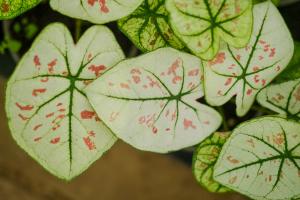Introduction
Fruit trees are a great addition to any garden or backyard. They not only provide beauty but also offer delicious and healthy fruits. However, planting a fruit tree is only the first step in ensuring a healthy harvest. Once planted, fruit trees require proper care and support to thrive. In this article, we will discuss how long to support fruit trees after planting to help you ensure a healthy and bountiful harvest.
Supporting Fruit Trees During the First Year
After planting, fruit trees require support and care during the first year to establish their roots and grow properly. Typically, fruit trees need to be staked or supported using a trellis or wires during this period. The support should be strong enough to withstand strong winds, but not too rigid to allow the tree to flex with the wind.
Most fruit trees require staking for the first year, while others may need support for two or three years. Young fruit trees can be supported by a single stake driven into the ground at a 45-degree angle, about six inches away from the trunk. The stake should be at least five feet tall, and the tree tied to the stake using a soft material such as a tree tie or a strip of cloth. The ties should be checked regularly and loosened if necessary to avoid any strangulation of the trunk as the tree grows.
Supporting Fruit Trees During the Second and Subsequent Years
Once the fruit tree has established its roots and become sturdy enough to withstand strong winds, the support can be removed. However, some fruit trees may require additional support during the second or third year, especially if they are growing in a windy area. After the tree is strong enough to stand on its own, it is crucial to prune it properly to ensure it grows into the desired shape and size.
Once the support has been removed, ensure that the trunk is sturdy enough to resist bending or breaking. Remove any damaged or diseased branches, and keep an eye on the fruit tree for pests and diseases. It is also important to water the tree regularly, especially during the hot summer months, to keep the soil moist and encourage root growth.
Conclusion
In conclusion, supporting fruit trees after planting is essential to ensure a healthy and productive harvest. During the first year, fruit trees require proper support to establish their roots and grow. Most fruit trees need staking for the first year, while some may require support for two or three years. Once the tree has established its roots and become sturdy enough to withstand strong winds, the support can be removed, and the tree pruned properly to achieve the desired shape and size. Proper care, pruning, and watering will ensure that your fruit trees remain healthy and bountiful for years to come.

 how many times do yo...
how many times do yo... how many planted tre...
how many planted tre... how many pine trees ...
how many pine trees ... how many pecan trees...
how many pecan trees... how many plants comp...
how many plants comp... how many plants can ...
how many plants can ... how many plants and ...
how many plants and ... how many pepper plan...
how many pepper plan...































